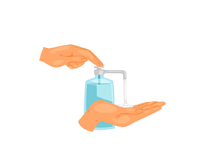Trioxasalen
Trioxasalen is a topical medication primarily used to treat skin conditions, particularly vitiligo. It is a psoralen derivative, which works by increasing the skin’s sensitivity to ultraviolet (UV) light. When used in combination with controlled UV exposure, Trioxasalen helps repigment the skin, aiding in the treatment of depigmented patches caused by conditions such as vitiligo and other pigmentary disorders. This medication can also be used in photochemotherapy (PUVA therapy), a treatment that enhances the effects of UV light for certain skin conditions.
Uses of Trioxasalen
- Treats vitiligo by stimulating repigmentation of depigmented skin patches.
- Used in photochemotherapy for other skin conditions that benefit from UV light exposure, such as psoriasis.
- Sometimes prescribed for conditions like eczema or atopic dermatitis when conventional treatments are ineffective.
- Can be used to treat skin pigmentation disorders associated with autoimmune conditions.
How Trioxasalen Works
Trioxasalen works by making the skin more sensitive to UV light. When applied topically, it binds to the DNA in skin cells and, under the influence of UV light, helps promote pigmentation. This makes it effective in treating conditions like vitiligo, where skin pigmentation is lost. The combination of Trioxasalen and UV light stimulates the production of melanin, the pigment responsible for skin color, thus improving the appearance of depigmented areas.
Benefits of Trioxasalen
- Effective in stimulating repigmentation in vitiligo patients.
- Enhances the results of photochemotherapy (PUVA) by increasing skin’s response to UV light.
- Can improve the appearance of depigmented areas, reducing the visibility of skin discoloration.
- Helps restore the natural color of skin affected by autoimmune disorders like vitiligo.
- Often used as an adjunctive therapy for patients who do not respond well to other treatments for skin pigmentation disorders.
How to Take Trioxasalen
Trioxasalen is typically applied as a topical cream or ointment to the affected skin areas. It is essential to apply the medication according to the prescribed dosage, usually 30 minutes before undergoing UV light treatment. After applying the medication, the patient will typically be exposed to UV light either in a controlled setting, like a UV light chamber, or with phototherapy lamps. The exact treatment protocol, including dosage and frequency, will depend on the specific condition and the doctor's recommendations.
Types of Dosage Available
- Trioxasalen cream or ointment (concentrations vary depending on the brand and formulation)
- Trioxasalen tablets (used in some cases when combined with UV light therapy)
Side Effects of Trioxasalen
- Common side effects include skin irritation, redness, or burning at the application site.
- Some individuals may experience increased sensitivity to sunlight, leading to sunburn or tanning.
- Long-term use of Trioxasalen can increase the risk of skin damage, such as premature aging or skin cancer, particularly with excessive UV exposure.
- Rarely, individuals may experience an allergic reaction, such as rash, itching, or swelling at the application site.
- In some cases, prolonged use can lead to uneven skin pigmentation or hyperpigmentation in treated areas.
Safety Advice
- Always follow your healthcare provider’s instructions for applying Trioxasalen and undergoing UV light therapy.
- Do not exceed the recommended dosage or frequency of treatment, as overuse can lead to skin damage.
- Wear protective clothing and sunscreen when exposed to natural sunlight after using Trioxasalen to reduce the risk of sunburn.
- Notify your doctor if you have a history of skin cancer, as Trioxasalen combined with UV light therapy may increase the risk of skin malignancies.
- Pregnant or breastfeeding women should consult with their doctor before using Trioxasalen to ensure it is safe for use during pregnancy or lactation.
Frequently Asked Questions (FAQs)
Q: What is Trioxasalen used for?
A: Trioxasalen is primarily used to treat vitiligo, a skin condition where pigmentation is lost. It is also used in photochemotherapy to treat conditions like psoriasis and other skin disorders associated with pigmentation issues.
Q: How should Trioxasalen be applied?
A: Trioxasalen is typically applied topically to the affected skin areas before UV light therapy. It is important to follow your doctor’s instructions regarding the amount and frequency of application to achieve the best results.
Q: What are the side effects of Trioxasalen?
A: Common side effects include skin irritation, sunburn, or increased sensitivity to UV light. Long-term use may increase the risk of skin damage, premature aging, or skin cancer. If you experience any severe reactions, such as allergic symptoms, contact your doctor immediately.
Q: Can Trioxasalen be used for conditions other than vitiligo?
A: Yes, Trioxasalen can also be used in the treatment of other skin conditions such as psoriasis and eczema when combined with UV light therapy.
Q: Is Trioxasalen safe for pregnant or breastfeeding women?
A: Pregnant or breastfeeding women should consult their healthcare provider before using Trioxasalen, as its safety during pregnancy and lactation has not been fully established.
Download India's most affordable pharmacy app
- Compare with medicine prices
- Save upto 90% on your medicine bills

Temperature Controlled storage and delivery

Regular Sanitization

Disinfected Packaging













 Added!
Added!